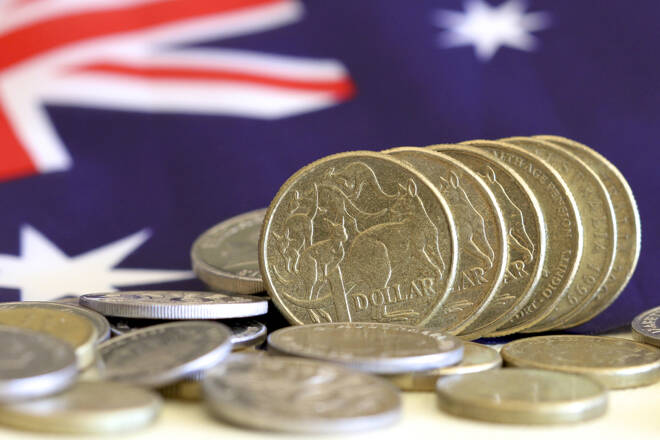Advertisement
Advertisement
AUD/USD and NZD/USD Fundamental Daily Forecast – Aussie Testing 8-Month High Ahead of Fed Policy Decision
By:
Last week, the Aussie soared on the back of stronger-than-expected consumer inflation, which drove up the chances of a 25-basis point RBA rate hike.
The Australian and New Zealand finished mixed on Friday, but up for the week with the Aussie putting up nearly a 2% gain for the period.
On Friday, gains were capped by higher U.S. Treasury yields and a stronger U.S. Dollar as investors responded to a report that showed an uptick in consumer prices.
For the week, the Australian Dollar soared on the back of stronger-than-expected consumer inflation. The New Zealand Dollar nudged higher, but gains were limited by softer-than-forecast consumer prices.
On Friday, the AUD/USD settled at .7109, down 0.0005 or -0.08% and the NZD/USD finished at .6493, up .0002 or +0.03%. The Invesco CurrencyShares Australian Dollar Trust ETF (FXA) closed at $70.42, down $0.06 or -0.09%.
US Core PCE Price Index Rises
The core personal consumption price expenditures index rose by 4.4% from a year ago in December, the Commerce Department reported Friday. That was in line with economists’ consensus estimate form Dow Jones. Including food and energy costs, inflation was up 5% on an annual basis.
After a string of lighter inflation readings lately, the data may have disappointed some traders. Still, the core inflation number does represent a slight slowdown from a 4.7% annual pace reported in the prior month.
Australian Dollar Jumps as Investors Price in 25 Basis Point Rate Hike
Meanwhile in Australia, traders priced in the chances of a higher rate hike on the back of stronger-than-expected quarterly consumer inflation data, optimism over China’s reopening and increasing risk sentiment.
The financial markets have sharply narrowed the odds on further hikes from the Reserve Bank of Australia (RBA) following a surprisingly high reading for inflation in the fourth quarter.
Headline consumer prices climbed 7.8% in the year to December, while a key core measure jumped to 6.9%.
Chances of 75 Basis Point Rate Hike by Reserve Bank of New Zealand Fade
Over in New Zealand, traders are leaning the other way on a super-sized rate hike in February after inflation came in softer than expected.
Futures now heavily favor a half-point hike to 4.75%, rather than a move of 75 basis points, and have lowered the likely top for rates to 5.25% from 5.5%.
Short-Term Outlook
Going into the start of the Federal Reserve’s two-day monetary policy meeting, many investors are hoping for the central bank to slow the pace of interest rate hikes further and announce a 25 basis point increase then.
One the biggest concerns ahead of the meeting is the pace of rate increases so far leading the U.S. economy into a recession. However, some of those worries were softened last week when the U.S. GDP reading for the final quarter of 2022 showed the economy expanded by 2.9%, which was just above the 2.8% expected by economists previously surveyed by Dow Jones.
Nonetheless, the news also gave the Fed room to respond with a 50 basis point rate hike, higher than the market’s expectations for a 25 basis point move.
For a look at all of today’s economic events, check out our economic calendar.
About the Author
James Hyerczykauthor
James Hyerczyk is a U.S. based seasoned technical analyst and educator with over 40 years of experience in market analysis and trading, specializing in chart patterns and price movement. He is the author of two books on technical analysis and has a background in both futures and stock markets.
Advertisement
